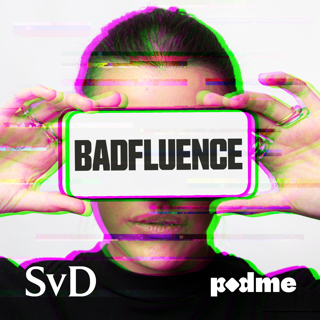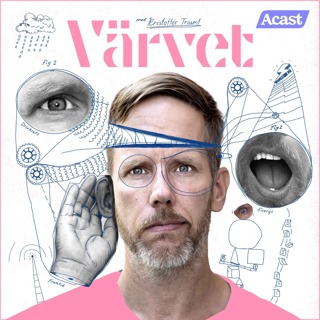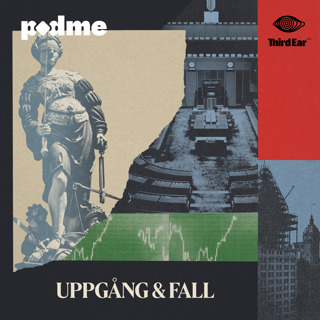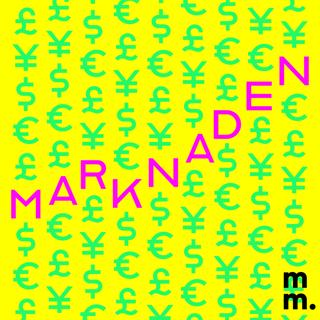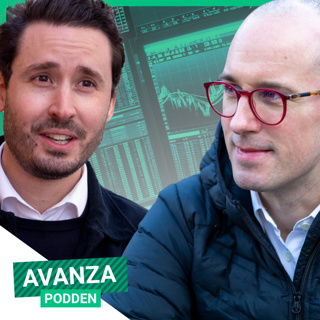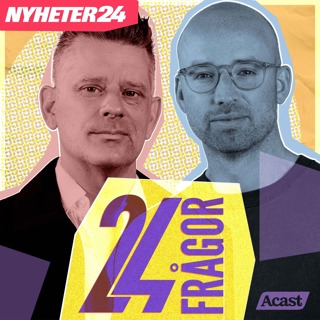
Sovereign AI: Why Nations Are Building Their Own Models
What happens when AI stops being just infrastructure—and becomes a matter of national identity and global power?In this episode, a16z’s Anjney Midha and Guido Appenzeller explore the rise of sovereign AI—the idea that countries must own their own AI models, data centers, and value systems.From Saudi Arabia’s $100B+ AI ambitions to the cultural stakes of model alignment, we examine:Why nations are building local “AI factories” instead of relying on U.S. cloud providersHow foundation models are becoming instruments of soft powerWhat the DeepSeek release tells us about China’s AI strategyWhether the world needs a “Marshall Plan for AI”And how open-source models could reshape the balance of powerAI isn’t just a technology anymore - it’s geopolitical infrastructure. This conversation maps the new battleground.Resources:Find Anj on X: https://x.com/AnjneyMidhaFind Guido on X: https://x.com/appenzStay Updated: Let us know what you think: https://ratethispodcast.com/a16zFind a16z on Twitter: https://twitter.com/a16zFind a16z on LinkedIn: https://www.linkedin.com/company/a16zSubscribe on your favorite podcast app: https://a16z.simplecast.com/Follow our host: Follow our host: https://x.com/eriktorenbergPlease note that the content here is for informational purposes only; should NOT be taken as legal, business, tax, or investment advice or be used to evaluate any investment or security; and is not directed at any investors or potential investors in any a16z fund. a16z and its affiliates may maintain investments in the companies discussed. For more details please see a16z.com/disclosures. Stay Updated:Find a16z on XFind a16z on LinkedInListen to the a16z Podcast on SpotifyListen to the a16z Podcast on Apple PodcastsFollow our host: https://twitter.com/eriktorenberg Please note that the content here is for informational purposes only; should NOT be taken as legal, business, tax, or investment advice or be used to evaluate any investment or security; and is not directed at any investors or potential investors in any a16z fund. a16z and its affiliates may maintain investments in the companies discussed. For more details please see a16z.com/disclosures. Hosted by Simplecast, an AdsWizz company. See pcm.adswizz.com for information about our collection and use of personal data for advertising.
24 Maj 32min

What Is an AI Agent?
What exactly is an AI agent — and does anyone actually agree?In this episode, taken from of AI + a16z, General Partner Guido Appenzeller and partners Matt Bornstein and Yoko Li break down one of the most hyped- and most hotly debated 0 concepts in AI right now: agents.Are agents just clever wrappers around LLMs? Tools that can reason and act? Or simply a fresh label for familiar tech?Whether you're building, investing, or just trying to make sense of the buzz, this episode is for you.Resources:Find Guido on X: https://x.com/appenzFind Yoko on X: https://x.com/stuffyokodrawsFind Matt on X: https://x.com/BornsteinMattStay Updated: Let us know what you think: https://ratethispodcast.com/a16zFind a16z on Twitter: https://twitter.com/a16zFind a16z on LinkedIn: https://www.linkedin.com/company/a16zSubscribe on your favorite podcast app: https://a16z.simplecast.com/Follow our host: https://x.com/eriktorenbergPlease note that the content here is for informational purposes only; should NOT be taken as legal, business, tax, or investment advice or be used to evaluate any investment or security; and is not directed at any investors or potential investors in any a16z fund. a16z and its affiliates may maintain investments in the companies discussed. For more details please see a16z.com/disclosures. Stay Updated:Find a16z on XFind a16z on LinkedInListen to the a16z Podcast on SpotifyListen to the a16z Podcast on Apple PodcastsFollow our host: https://twitter.com/eriktorenberg Please note that the content here is for informational purposes only; should NOT be taken as legal, business, tax, or investment advice or be used to evaluate any investment or security; and is not directed at any investors or potential investors in any a16z fund. a16z and its affiliates may maintain investments in the companies discussed. For more details please see a16z.com/disclosures. Hosted by Simplecast, an AdsWizz company. See pcm.adswizz.com for information about our collection and use of personal data for advertising.
22 Maj 36min

The Evolution of the Firm — with Ben and Marc
Recorded live at the 2025 a16z LP Summit, this episode is a candid conversation between a16z cofounders Marc Andreessen and Ben Horowitz—hosted by general partner Erik Torenberg.They cover the evolution of a16z from startup firm to multi-practice platform, how the media landscape is shaped by meme-speed narratives, why reorgs—not just returns—determine who wins, and what it takes to build an enduring venture franchise.They also share thoughts on the changing policy landscape for AI and crypto, the firm’s bipartisan approach to Washington—and why Marc personally screens social media profiles before anyone joins the team. Resources: Find Marc on X: https://x.com/pmarcaFind Ben on X: https://x.com/bhorowitz Stay Updated: Let us know what you think: https://ratethispodcast.com/a16zFind a16z on Twitter: https://twitter.com/a16zFind a16z on LinkedIn: https://www.linkedin.com/company/a16zSubscribe on your favorite podcast app: https://a16z.simplecast.com/Follow our host: Follow our host: https://x.com/eriktorenbergPlease note that the content here is for informational purposes only; should NOT be taken as legal, business, tax, or investment advice or be used to evaluate any investment or security; and is not directed at any investors or potential investors in any a16z fund. a16z and its affiliates may maintain investments in the companies discussed. For more details please see a16z.com/disclosures. Stay Updated:Find a16z on XFind a16z on LinkedInListen to the a16z Podcast on SpotifyListen to the a16z Podcast on Apple PodcastsFollow our host: https://twitter.com/eriktorenberg Please note that the content here is for informational purposes only; should NOT be taken as legal, business, tax, or investment advice or be used to evaluate any investment or security; and is not directed at any investors or potential investors in any a16z fund. a16z and its affiliates may maintain investments in the companies discussed. For more details please see a16z.com/disclosures. Hosted by Simplecast, an AdsWizz company. See pcm.adswizz.com for information about our collection and use of personal data for advertising.
20 Maj 33min

Unbundling the BPO: How AI Is Disrupting Outsourced Work
Business Process Outsourcing (BPO) is a $300 billion industry powering the back- and front-office operations of the world’s largest companies.In her article, "Unbundling the BPO: How AI Will Disrupt Outsourced Work," Kimberly Tan (Partner, a16z) explores how the rise of AI is challenging the status quo. In this episode, Kimberly unpacks the shift—from call centers and invoice processing to cross-system automation and coding agents. They explore how AI is redefining the economics of scale, unlocking new markets, and expanding the reach of automation beyond the Fortune 500. For founders and operators alike, this conversation offers a clear-eyed look at the playbook for building in this newly addressable space. Resources: Read the article: https://a16z.com/unbundling-the-bpo-how-ai-will-disrupt-outsourced-work/Find Kimberly on X: https://x.com/kimberlywtan Stay Updated: Let us know what you think: https://ratethispodcast.com/a16zFind a16z on Twitter: https://twitter.com/a16zFind a16z on LinkedIn: https://www.linkedin.com/company/a16zSubscribe on your favorite podcast app: https://a16z.simplecast.com/Follow our host: https://x.com/eriktorenbergPlease note that the content here is for informational purposes only; should NOT be taken as legal, business, tax, or investment advice or be used to evaluate any investment or security; and is not directed at any investors or potential investors in any a16z fund. a16z and its affiliates may maintain investments in the companies discussed. For more details please see a16z.com/disclosures. Stay Updated:Find a16z on XFind a16z on LinkedInListen to the a16z Podcast on SpotifyListen to the a16z Podcast on Apple PodcastsFollow our host: https://twitter.com/eriktorenberg Please note that the content here is for informational purposes only; should NOT be taken as legal, business, tax, or investment advice or be used to evaluate any investment or security; and is not directed at any investors or potential investors in any a16z fund. a16z and its affiliates may maintain investments in the companies discussed. For more details please see a16z.com/disclosures. Hosted by Simplecast, an AdsWizz company. See pcm.adswizz.com for information about our collection and use of personal data for advertising.
17 Maj 17min

Marc Andreessen: Deep Vs. Broad Founders, AI in America, & the New Face of a16z
Today on the a16z Podcast, we’re sharing Marc Andreessen’s recent appearance on TBPN.Marc—cofounder and general partner at a16z—joins hosts John Coogan and Jordi Hays for a wide-ranging conversation, recorded live at the a16z’s 2025 LP Conference in Las Vegas.They cover the rise of AI, the future of open source models, and how tech is transforming every corner of the economy—from education and defense to healthcare and housing.Marc also shares his thoughts on the evolution of venture capital, the firm’s new branding, and what it takes to build enduring companies in a rapidly changing world. Resources:Watch more from TBPN: https://www.tbpn.com/Find TBPN on X: https://x.com/tbpnFind Marc on X: https://x.com/pmarca Stay Updated: Let us know what you think: https://ratethispodcast.com/a16zFind a16z on Twitter: https://twitter.com/a16zFind a16z on LinkedIn: https://www.linkedin.com/company/a16zSubscribe on your favorite podcast app: https://a16z.simplecast.com/Follow our host: https://x.com/eriktorenbergPlease note that the content here is for informational purposes only; should NOT be taken as legal, business, tax, or investment advice or be used to evaluate any investment or security; and is not directed at any investors or potential investors in any a16z fund. a16z and its affiliates may maintain investments in the companies discussed. For more details please see a16z.com/disclosures. Stay Updated:Find a16z on XFind a16z on LinkedInListen to the a16z Podcast on SpotifyListen to the a16z Podcast on Apple PodcastsFollow our host: https://twitter.com/eriktorenberg Please note that the content here is for informational purposes only; should NOT be taken as legal, business, tax, or investment advice or be used to evaluate any investment or security; and is not directed at any investors or potential investors in any a16z fund. a16z and its affiliates may maintain investments in the companies discussed. For more details please see a16z.com/disclosures. Hosted by Simplecast, an AdsWizz company. See pcm.adswizz.com for information about our collection and use of personal data for advertising.
16 Maj 28min

What Super Agers Reveal About Preventing Disease
American healthcare is in crisis—but what if we could change the system by preventing disease before it starts?In this episode of the a16z Podcast, general partner Vijay Pande sits down with Dr. Eric Topol, founder and director of the Scripps Research Translational Institute and one of the most cited researchers in medicine, to explore the cutting edge of preventive healthcare and longevity science.Drawing from his new book Super Agers: An Evidence-Based Path to Longevity, Topol breaks down why understanding the biology of aging—not reversing it—is the key to preventing the “Big Three” age-related diseases: cancer, cardiovascular disease, and neurodegenerative conditions. The conversation spans AI-powered risk prediction, organ clocks, polygenic risk scores, GLP-1s, and the cultural and economic shifts required to move from a “sick care” system to one rooted in precision prevention and extended healthspan.If you’ve ever wondered how data, personalized medicine, and AI can add seven healthy years to your life—and what it will take to bring those benefits to everyone—this episode is for you. Resources: Find Eric on X: https://x.com/erictopolFind Vijay on X: https://x.com/vijaypande Stay Updated: Let us know what you think: https://ratethispodcast.com/a16zFind a16z on Twitter: https://twitter.com/a16zFind a16z on LinkedIn: https://www.linkedin.com/company/a16zSubscribe on your favorite podcast app: https://a16z.simplecast.com/Follow our host: https://twitter.com/stephsmithioPlease note that the content here is for informational purposes only; should NOT be taken as legal, business, tax, or investment advice or be used to evaluate any investment or security; and is not directed at any investors or potential investors in any a16z fund. a16z and its affiliates may maintain investments in the companies discussed. For more details please see a16z.com/disclosures. Stay Updated:Find a16z on XFind a16z on LinkedInListen to the a16z Podcast on SpotifyListen to the a16z Podcast on Apple PodcastsFollow our host: https://twitter.com/eriktorenberg Please note that the content here is for informational purposes only; should NOT be taken as legal, business, tax, or investment advice or be used to evaluate any investment or security; and is not directed at any investors or potential investors in any a16z fund. a16z and its affiliates may maintain investments in the companies discussed. For more details please see a16z.com/disclosures. Hosted by Simplecast, an AdsWizz company. See pcm.adswizz.com for information about our collection and use of personal data for advertising.
14 Maj 42min

Startups & Defense: Katherine Boyle on TBPN
In this episode of th a16z Podcast, we’re sharing Katherine Boyle’s recent interview on TBPN.Katherine—General Partner at a16z and the architect of the American Dynamism thesis—joins hosts John Coogan and Jordi Hays to discuss the state of the movement today. They cover the Department of Defense’s sweeping reform efforts, the role of startups in national security, and why American Dynamism is just getting started.From procurement reform to reindustrialization, this wide-ranging conversation explores how founders and investors are reshaping the future in service of the national interest.Resources:Watch more from TBPN: https://www.tbpn.com/Find TBPN on X: https://x.com/tbpnFind Katherine on X: https://x.com/KTmBoyleStay Updated: Let us know what you think: https://ratethispodcast.com/a16zFind a16z on Twitter: https://twitter.com/a16zFind a16z on LinkedIn: https://www.linkedin.com/company/a16zSubscribe on your favorite podcast app: https://a16z.simplecast.com/Follow our host: https://x.com/eriktorenbergPlease note that the content here is for informational purposes only; should NOT be taken as legal, business, tax, or investment advice or be used to evaluate any investment or security; and is not directed at any investors or potential investors in any a16z fund. a16z and its affiliates may maintain investments in the companies discussed. For more details please see a16z.com/disclosures. Stay Updated:Find a16z on XFind a16z on LinkedInListen to the a16z Podcast on SpotifyListen to the a16z Podcast on Apple PodcastsFollow our host: https://twitter.com/eriktorenberg Please note that the content here is for informational purposes only; should NOT be taken as legal, business, tax, or investment advice or be used to evaluate any investment or security; and is not directed at any investors or potential investors in any a16z fund. a16z and its affiliates may maintain investments in the companies discussed. For more details please see a16z.com/disclosures. Hosted by Simplecast, an AdsWizz company. See pcm.adswizz.com for information about our collection and use of personal data for advertising.
7 Maj 33min

Do You Really Know Your ICP? Why It Matters and How to Find Out
Your ideal customer profile (ICP) is the north star for your entire company: it determines who you’re building for and selling to. Though most growth-stage founders think they know who their ICP is, very few know how to update and refine it to keep the company focused as they grow—which can lead to a lot of headaches down the road.In this debut episode of a16z Growth’s new company scaling podcast, the a16z Guide to Growth, a16z's Joe Morrissey (General Partner, a16z Growth), Michael King (Partner, Go-to-Market Network), and Mark Regan (Partner, a16z Growth) break down why ICP misalignment is often the hidden cause of common problems across the entire company, from pipeline gaps and bloated marketing spend to stalled product roadmaps—and dive deep on how to fix it.They offer tactical advice for defining (and refining!) your ICP as you scale, explain why getting it right requires company-wide alignment, and how to navigate the “precision paradox” when implementing it. Plus, why ICPs matter even more in the AI era, and how a well-executed ICP shows up across the business when it's working. Resources: Read more on sales and go-to-market on our Growth Content CompendiumFind Joe on LinkedIn: https://www.linkedin.com/in/morrisseyjoe/Find Mark on LinkedIn: https://www.linkedin.com/in/mregan178/Find Michael on LinkedIn: https://www.linkedin.com/in/michael-king-62258/Find Emma on LinkedIn: https://www.linkedin.com/in/emmajanaskie/ Stay Updated: Let us know what you think: https://ratethispodcast.com/a16zFind a16z on Twitter: https://twitter.com/a16zFind a16z on LinkedIn: https://www.linkedin.com/company/a16zSubscribe on your favorite podcast app: https://a16z.simplecast.com/Follow our host: https://twitter.com/stephsmithioPlease note that the content here is for informational purposes only; should NOT be taken as legal, business, tax, or investment advice or be used to evaluate any investment or security; and is not directed at any investors or potential investors in any a16z fund. a16z and its affiliates may maintain investments in the companies discussed. For more details please see a16z.com/disclosures. Stay Updated:Find a16z on XFind a16z on LinkedInListen to the a16z Podcast on SpotifyListen to the a16z Podcast on Apple PodcastsFollow our host: https://twitter.com/eriktorenberg Please note that the content here is for informational purposes only; should NOT be taken as legal, business, tax, or investment advice or be used to evaluate any investment or security; and is not directed at any investors or potential investors in any a16z fund. a16z and its affiliates may maintain investments in the companies discussed. For more details please see a16z.com/disclosures. Hosted by Simplecast, an AdsWizz company. See pcm.adswizz.com for information about our collection and use of personal data for advertising.
7 Maj 35min



